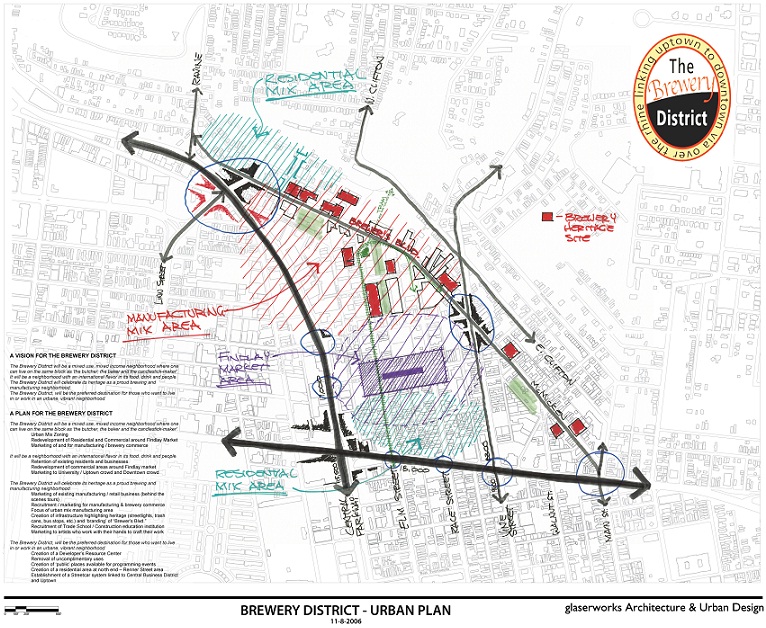In 2006 volunteers and community leaders developed an urban master plan for Over-the-Rhine. The plan developed goals and strategies to help reinvigorate the historic neighborhood, but now a familiar group of community leaders is looking to take the plan to the next level.
The new planning effort announced today by the Brewery District Community Urban Redevelopment Corporation (BDCURC) and Glaserworks will focus on the northern part of the neighborhood surrounding Findlay Market and the Brewery District. Organizers say that the goal is to take a more targeted economic approach.
“This is not really a comprehensive master plan, but rather a process to form a development plan for the area,” explained BDCURC executive director Steven Hampton. “We’ve got different buildings and building heights than the rest of OTR, and we are looking at how we can best use those assets.”
The 2006 plan, for which this planning effort is based, called for a number of items that have since moved forward including the Cincinnati Streetcar, Urban Mix Zoning District and the branding of the Brewery District. Still though, leaders say more needs to be done for the historic sub-area of OTR which includes an estimated 44 structures that were at one point used for beer brewing purposes.
“We’ve had some good successes being a volunteer group with virtually no budget, but now we are looking for official partners like Glaserworks and funding options for this next effort”
There is reason for hope in this long beleaguered area of Over-the-Rhine though. Rookwood Pottery and Christian Moerlein have opened up major operations in the area, and Findlay Market has experienced tremendous success over recent years. Hampton also says that the future of the area with the streetcar looks bright.
“As a whole everyone has struggled with the economy, but there has been more interest as the streetcar gets closer to fruition,” Hampton said. “We’re getting closer from a couple of different angles, and a lot of smaller investment has kept the area moving forward.”
The planning effort will start in earnest this spring and will look to capitalize off of the neighborhood’s existing urban assets. True loft-style residences, hillside development, large warehouses and typical Over-the-Rhine building stock all exist in the northern reaches of the neighborhood. And this is where community leaders believe the future lies.
“You’re going to see a neighborhood that’s really a mixed-use, walkable neighborhood which has protected its industrial and small businesses while also bringing in new ones,” Hampton concluded. “We’re not reinventing the wheel here. This is how the area is built, and that’s how it will continue to function. We’re just hoping to capitalize on that.”

